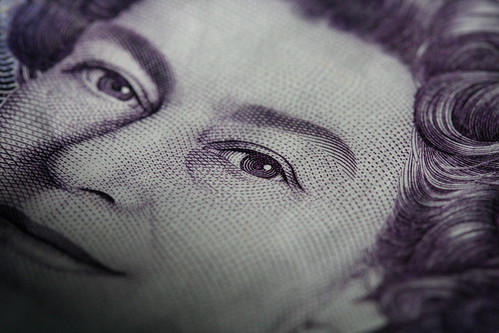 The idea that our money system is wrong is becoming more visible every day, but creating money systems designed for grassroots adoption (without government involvement) is quite a challenge.
The idea that our money system is wrong is becoming more visible every day, but creating money systems designed for grassroots adoption (without government involvement) is quite a challenge.
At the unMoney convergence event last spring, Michael Linton, a pioneer of alternative community currencies, gave a presentation of a money system that I found very convincing (Part 1, Part 2, Part 3, Part 4).
The basic premise is that an alternative money system designed for grassroots adoption should not require long, philosophical explanations, but should simply make economic sense for all participants.
Michael identifies three kinds of participants:
- businesses
- non-profits
- people like you and me
The system works as follows:
- businesses issues promises in their “own currency”, i.e. in the goods/services their business provides. Could be movie tickets for a movie theater or bread coupons for a baker. They issue them to the non-profits of their choice, for instance a church or school or hospital. Note that this does not cost them anything as long as they don’t issue more than their business can deliver. For practical purposes these promises are issued in the same unit as the legal tender currency, say the US dollar.
- non-profits take theses local currency notes and sell them to people like you and me for real cash, which they can use to pay for their operating expenses. Again, here, people like you can me buy them from the non-profits of their choice.
- people like you and me work for hard cash at businesses and volunteer/work at non-profits. We earn both real cash and local currency notes. Local currency notes can be spent at local businesses who accept them according to their policy. For instance a restaurant might accept to be paid 50% in real cash and 50% in local currency, while a grocery store might accept to be paid 90% in real cash and 10% in local currency. This will depends essentially on how much real cash they need to support expenses that can’t be covered with local currency.
As the quantity of local currency increases, both in terms of absolute quantity issued and velocity, the benefits for each participants is that real wealth is created (better education, better service for old people, better roads, better health, etc.) but unlike real cash, it cannot be extracted from one community and spent in another one. In other words, the wealth of neighbors is captive and no one but the neighbors capitalize on it.
So, wealth increases, but it’s also shared:
- businesses get more revenue in local currency that they can use to hire more people they pay in local currency, buy from other businesses in local currency, etc.
- people like you and me get more real wealth via the non-profits and get more money in terms of things that are truly valued: local businesses and local free services.
My comment
This model follows some of my own ideas that promises from businesses are probably a better backing mechanism to a local currency then thin air or hours of people like you and me, or a commodity, especially if these promises are in their own currency, i.e. what they produce. I think borrowing in your own currency is a privilege everyone should have (not just the US government) to the extent that they can deliver on their promises.
This model is a sort of Scrip 2.0, which is great since it builds on an existing well established practice of using coupons issued by merchants to non-profit for fundraising (with the major disctinction that in Michael’s model case, there is no impact on the profit margin of the business: $1 of local currency is $1 of real cash vs. $1 of local currency is issued at say $0.9 real cash and sold at face value – $1 – to you and me in the case of scrip).
I think one issue might be that the distinction between businesses and non-profit is pretty vague in the current description I’ve watched (but I’ve probably missed some content). An improvement in that direction would simply be to say that may not discriminate who they provide their services/goods, in particular on the basis of who gave and who didn’t buy local currency from them. I think a local “shaming” or abuse reporting system might be enough for a local currency.
I think it’s important that the notes issued carry the brand of the business who issued it (either in paper or electronically). This would prevent businesses to print too much local currency which may ruin the system via inflation, which is essentially paper wealth or fictitious wealth):
- Businesses could easily be forbidden to use local currency they’ve issued for paying other businesses or their employees: business would have to recycle money they’ve issued and got back via the non-profits.
- People/Non-profits would quickly notice if the business has a hard time redeeming the local currency they’ve issued. Again here a local shaming/reputation system would put pressure on the business to limit their issuance.
I think Michael’s model is very exciting and I am planning to talk about it with people in my neighborhood. Feel free to comment here on the pitfalls/improvements you see. What I’d like to do as a next step is a more detailed analysis of the model with hard numbers.


